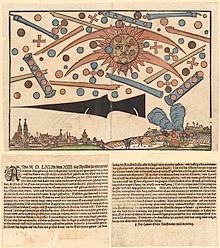Gilbert M. Stack's Blog, page 101
April 16, 2019
Today in History: Abraham Lincoln Freed the Slaves in Washington DC
On this day (April 16) in 1862, Abraham Lincoln freed all of the slaves in Washington D.C. It wouldn't be until January 1, 1863 that he freed the 3.1 million slaves living in Confederate States. Even then, slaves held in Union States (KE, MA, MO, & DE), occupied-and-Union-leaning TE and in the VA counties becoming WV and the Tidewater area all remained in bondage. Lincoln believed that his war powers gave him the right to free the slaves in the rebellious, but not in the loyal parts of the union. Making certain that all slaves were freed and remained free was the reason for his push to ratify the Thirteenth Amendment.
April 15, 2019
Today in History: Abraham Lincoln Died
On this day (April 15) in 1865, President Abraham Lincoln died. He’d been shot the night before in the back of the head by John Wilkes Booth while watching the play, The American Cousin, at Ford’s Theater. Lincoln’s bodyguard was drinking in the saloon next door. While most of the country reacted with shock and sorrow, Lincoln haters cheered the news.
April 14, 2019
Today in History: A 16th Century UFO Sighting
On this day (April 14) in 1561 a bizarre celestial phenomenon occurred in the skies above Nuremberg which contemporaries described as an aerial battle. According to broadsheet printed that month the phenomenon occurred at dawn and involved hundreds of spheres and strangely shaped objects flying about the sky in combat to each other. After these crashed from the sky, a large black triangular spear appeared.
UFO enthusiasts understandably think that UFOs were being described. Skeptics tend to credit the sundog phenomenon (an optical illusion which makes it appear that more than one sun is in the sky) is to blame. Here are pictures of both the broadsheet and the sundog phenomenon.


April 13, 2019
Today in History: England Enfranchised Catholics
On this day (April 13) in 1829 Great Britain passed the Roman Catholic Relief Act of 1829 granting its Roman Catholic citizens the right to vote and to serve in Parliament. Catholic emancipation was bitterly opposed by many in England, including King George IV and the House of Lords. It only passed because of the strong support of the Duke of Wellington who threatened to resign as Prime Minister if these basic rights were not given to the Catholics. (Wellington feared that a major uprising would occur in Ireland if something was not done to address the civil rights issue.) The Act also repealed the Test Act of 1672 and the remaining Penal Laws in Ireland which were designed to coercer Catholics into converting to Protestantism. As a compromise with opponents of Catholic emancipation, the property requirements for voting in Ireland were raised from two to ten pounds, disenfranchising many less wealthy Catholics and Protestants.
April 12, 2019
Pre-Order the New Legionnaire Book and Save 25%
Less than two weeks to order Legionnaire 7 the Bridges of Morganita at a 25% discount:
Marcus has defeated the smaller half of the army of Thegn Chilperic by the skin of his teeth, but now he must rally his legion and its allies to stop the Thegn’s main force from rolling back all of his victories. Yet even as he fights for control of the strategic bridges on the Rio Rocoso, Marcus’ allies remain as fractious as ever. The rebellious Gente of Morganita continue to fight among themselves for leadership of their cause, while the Gota also violently question the leadership of Marcus’ friend, Evorik. As if all of this weren’t bad enough, the mighty Thegn of Granate still tries to walk the middle path in this war, telling both Marcus and his enemies that he is loyal to them. Too soon now, Marcus will find out which side Granate betrays at the Bridges of Morganita.
You can find The Bridges of Morganita at Amazon, Amazon UK, iBooks, Kobo, B&N and other fine e-retailers.
Today in History: The First Recorded Campus Shooting in the U.S.
On this day (April 12) in 1840 the first recorded campus shooting occurred in the United States. The shooting occurred in the midst of an annual protest over the University of Virginia’s decision to ban guns on campus. The students were shooting guns near their instructors’ houses in protest when popular professor John A.G. Davis decided to put an end to it. He went outside and tried to grab one of the masked students. The student slipped away but turned and shot Davis in the belly, killing him.
The murder shocked the university community and students joined with their professor to hunt down the culprit, identified as Joseph Semmes. He was caught the next day hiding in a pine grove. He refused a judge’s request to take an oath on the bible to tell the truth because he was an atheist. He was then granted bail and fled, committing suicide at his brother’s house in Georgia seven years later by shooting himself in the eye.
April 11, 2019
Today in History: The Stone of Scone
On this day (April 11) in 1951, The Stone of Scone (also called The Stone of Destiny) was found on the altar of Arbroath Abbey. Various legends trace the stone back to either Ireland or biblical times, but however it came to be in Scotland, it came to be used in the coronation of Scottish Kings. In 1296, King Edward I of England captured the Stone and transported it to England where it was installed in the base of a wooden chair now known as the Coronation Chair in Westminster Abbey and became part of the English monarchy’s coronation rituals. On Christmas Day in 1950, 4 Scottish students stole the stone (accidentally breaking it in two) and eventually succeeded in returning it to Scotland where it was repaired (and no, I don’t know how you repair a broken stone). After approximately four months, they left the stone in Arbroath Abbey from which it was eventually returned to Westminster Abbey. However, in 1996 it was returned to Scotland to be stored with the Scottish Crown Jewels until it is needed for the next coronation ceremony.
April 10, 2019
Today in History: Halley's Comet
On this day (April 10) in 837, Halley’s Comet made its closest approach to the earth at 3.2 million miles. That’s approximately 13 times farther from the earth than the moon is. The idea of a comet (or similar celestial body) hitting the earth has long fascinated and worried people. (After all, there are some big examples of catastrophic damage being done from such a strike.) One of the best fictional accounts of such a strike is Lucifer’s Hammer, by Jerry Pournelle and Larry Niven.
April 8, 2019
Today in History: The 17th Amendment
On this day (April Eight) in 1917, the 17th Amendment to the U.S. Constitution became the law of the land. This amendment provided for the direct election of U.S. Senators by the people. Previously they had been elected by state legislatures.
April 7, 2019
Today in History: A Civil Rights Activist Killed
On this day (April 7) in 1964, Reverend Bruce W. Klunder was run over by a bulldozer while protesting the building of a segregated school in Cleveland. He was killed on the second day of the protests in which civil rights activists threw themselves on the ground in front of bulldozers to stop the construction work. While three of his fellow activists threw themselves in front of one particular bulldozer, Klunder lay down behind it. The driver of the bulldozer backed away from the protesters in front of him without ever seeing Klunder behind him. His death sparked a further protest involving 3500 people which the police broke up with tear gas. The school was built anyway.



